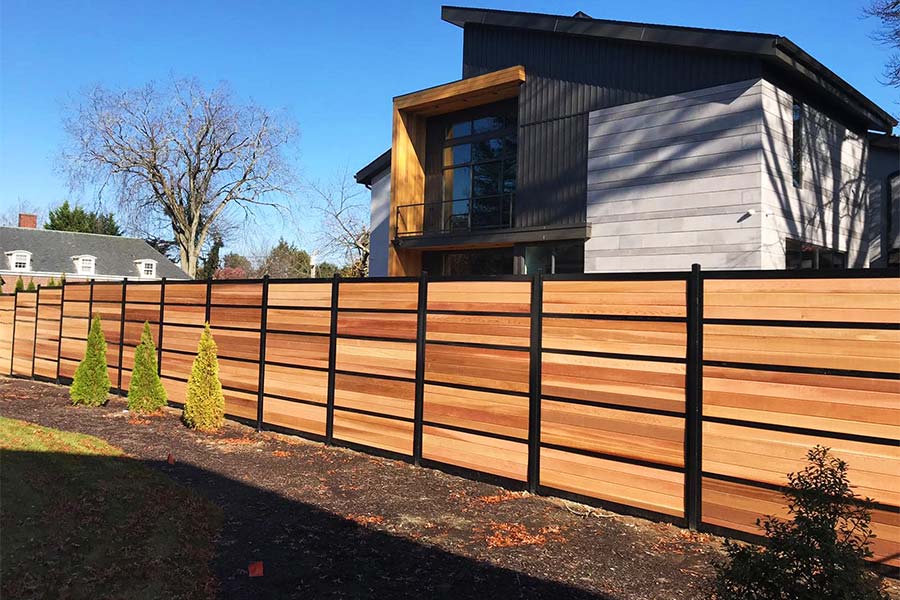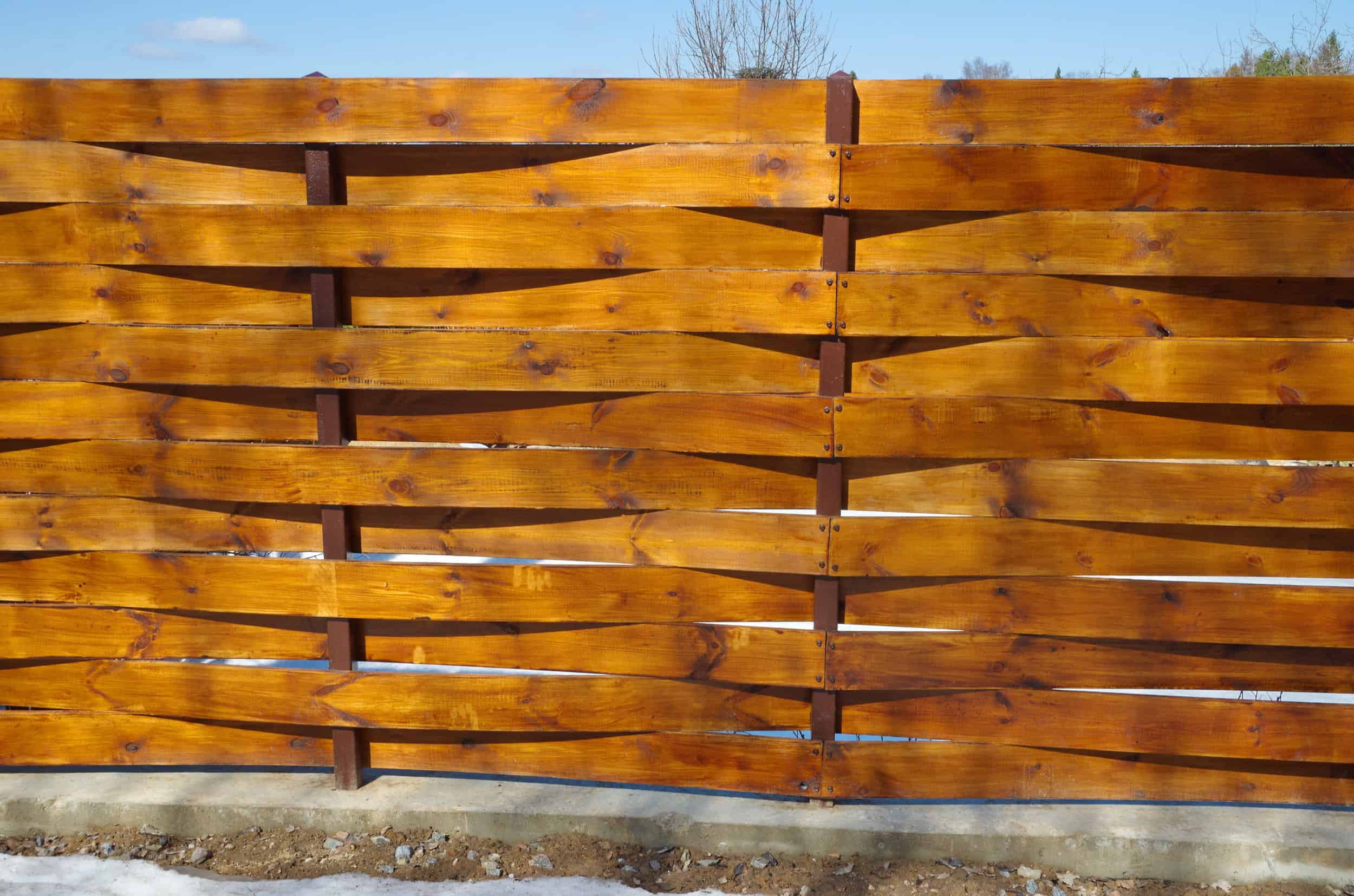All Categories
Featured
When it pertains to preserving a wooden fence, house owners typically face the decision of whether to stain or repaint. Both alternatives have their cons and pros, and the selection ultimately relies on your visual choices, the type of wood, and how much upkeep you want to dedicate to. Below's a detailed comparison to help you make an educated decision.
The Essentials of Paint and Staining
Paint includes covering the timber with a nontransparent layer of shade. It supplies total insurance coverage, hiding the timber grain while supplying excellent defense against ecological aspects.
Tarnishing penetrates the timber, boosting its natural beauty while adding a safety layer. Depending on the kind, discolorations can vary from transparent to strong, permitting varying levels of timber grain visibility.
Benefits And Drawbacks of Painting
Pros:
Vast Array of Colors: Repaint offers endless color choices, allowing you to match your fencing to your home's outside or individual design.
Longer Long-term: Top quality exterior paint can last up to 5-7 years, calling for much less constant reapplication.
Superior Security: Repaint types a thick, solid obstacle against wetness, UV rays, and bugs.
Cons:
Peeling and Splitting: In time, paint can peel off or split, specifically in areas with severe weather.
Hides Natural Timber Appeal: If you like the all-natural grain of timber, paint may not be the most effective selection.
Higher Upkeep: Repainting requires scuffing off the old paint, which can be labor-intensive.
![]()
Pros and Cons of Staining
Pros:
Natural Appearance: Spots preserve and improve the all-natural beauty of the timber, making it excellent for top quality timber like cedar or redwood.
Much Easier to Reapply: Unlike paint, discolorations don't split or peel off. Reapplying tarnish generally needs less surface preparation.
Flexible Finish Options: Stains come in clear, semi-transparent, and solid ranges, offering various levels of insurance coverage.
Cons:
![]()
Much Shorter Life-span: Spots, semi-transparent and specifically clear ones, may need reapplication every 2-3 years.
Restricted Color Options: While spots offer all-natural tones, they lack the broad shade palette readily available with paint.
Less Protective: Stains permeate the timber however don't supply as thick a barrier as paint, making them somewhat less safety against severe weather condition.
Aspects to Consider
Visual Preferences: If you desire lively shades and complete insurance coverage, paint is the means to go. For a rustic and all-natural appearance, go with tarnish.
Timber Type: Top quality woods with attractive grains benefit from discoloration, while lower-grade timbers can be painted for a sleek look.
![]()
Environment: In humid or damp environments, paint's thicker barrier may supply much better security. In completely dry or moderate climates, stains can be enough.
Upkeep Commitment: Painting involves much less regular reapplication but even more effort throughout touch-ups. Discoloration calls for routine maintenance but is less complicated to manage.
Last Thoughts
Both paint and staining can efficiently secure and enhance your wooden fence. The best alternative depends on your concerns, whether they favor aesthetics, toughness, or simplicity of upkeep. By understanding the benefits and downsides of each, you can choose the coating that aligns with your demands and ensures your fencing continues to be a standout function of your residential property for several years to find.
The Essentials of Paint and Staining
Paint includes covering the timber with a nontransparent layer of shade. It supplies total insurance coverage, hiding the timber grain while supplying excellent defense against ecological aspects.
Tarnishing penetrates the timber, boosting its natural beauty while adding a safety layer. Depending on the kind, discolorations can vary from transparent to strong, permitting varying levels of timber grain visibility.
Benefits And Drawbacks of Painting
Pros:
Vast Array of Colors: Repaint offers endless color choices, allowing you to match your fencing to your home's outside or individual design.
Longer Long-term: Top quality exterior paint can last up to 5-7 years, calling for much less constant reapplication.
Superior Security: Repaint types a thick, solid obstacle against wetness, UV rays, and bugs.
Cons:
Peeling and Splitting: In time, paint can peel off or split, specifically in areas with severe weather.
Hides Natural Timber Appeal: If you like the all-natural grain of timber, paint may not be the most effective selection.
Higher Upkeep: Repainting requires scuffing off the old paint, which can be labor-intensive.

Pros and Cons of Staining
Pros:
Natural Appearance: Spots preserve and improve the all-natural beauty of the timber, making it excellent for top quality timber like cedar or redwood.
Much Easier to Reapply: Unlike paint, discolorations don't split or peel off. Reapplying tarnish generally needs less surface preparation.
Flexible Finish Options: Stains come in clear, semi-transparent, and solid ranges, offering various levels of insurance coverage.
Cons:

Much Shorter Life-span: Spots, semi-transparent and specifically clear ones, may need reapplication every 2-3 years.
Restricted Color Options: While spots offer all-natural tones, they lack the broad shade palette readily available with paint.
Less Protective: Stains permeate the timber however don't supply as thick a barrier as paint, making them somewhat less safety against severe weather condition.
Aspects to Consider
Visual Preferences: If you desire lively shades and complete insurance coverage, paint is the means to go. For a rustic and all-natural appearance, go with tarnish.
Timber Type: Top quality woods with attractive grains benefit from discoloration, while lower-grade timbers can be painted for a sleek look.

Environment: In humid or damp environments, paint's thicker barrier may supply much better security. In completely dry or moderate climates, stains can be enough.
Upkeep Commitment: Painting involves much less regular reapplication but even more effort throughout touch-ups. Discoloration calls for routine maintenance but is less complicated to manage.
Last Thoughts
Both paint and staining can efficiently secure and enhance your wooden fence. The best alternative depends on your concerns, whether they favor aesthetics, toughness, or simplicity of upkeep. By understanding the benefits and downsides of each, you can choose the coating that aligns with your demands and ensures your fencing continues to be a standout function of your residential property for several years to find.
Latest Posts
Discover Exclusive Auto Repair Specials in Chicago at Montclare Auto Repair
Published en
1 min read
Take Advantage of Special Auto Repair Offers in Chicago at Montclare Auto Repair
Published en
1 min read
Find Outstanding Car Repair Services at Montclare Auto Repair – Drive with Confidence
Published en
1 min read
More
Latest Posts
Discover Exclusive Auto Repair Specials in Chicago at Montclare Auto Repair
Published May 29, 25
1 min read
Take Advantage of Special Auto Repair Offers in Chicago at Montclare Auto Repair
Published May 25, 25
1 min read
Find Outstanding Car Repair Services at Montclare Auto Repair – Drive with Confidence
Published May 24, 25
1 min read